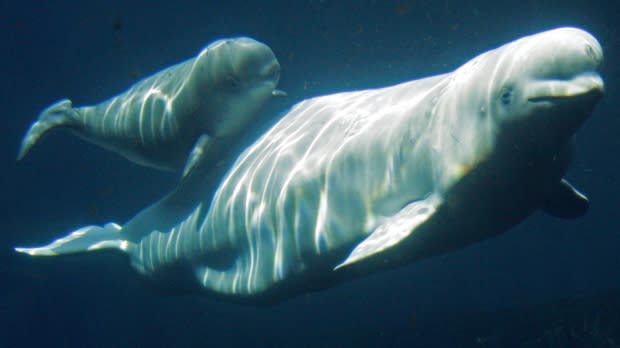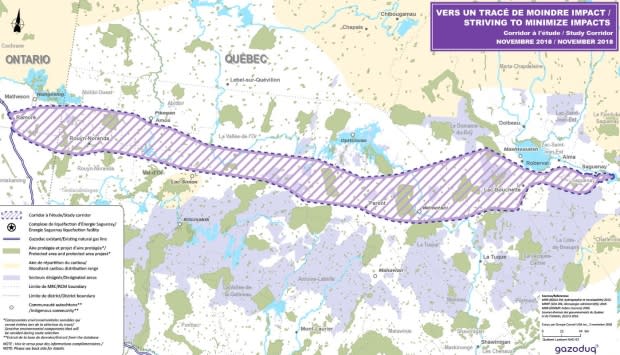Énergie Saguenay vows to be world's cleanest liquid natural gas plant
The proponents of a $9-billion project to pipe natural gas to the Saguenay region, where it would be transformed and exported worldwide by ship, say they're confident they can do that without harming the environment — including endangered beluga whales.
Gazoduc Inc., which is proposing to construct a 750-kilometre pipeline from northern Ontario to Saguenay, and GNL-Québec, which would build the refinery, presented their 1,100-page environmental impact study to the federal and provincial governments this week.
"At this point, we are focusing on determining the route," said Marie-Christine Demers, the director of public affairs and community relations for Gazoduc.
While that's still under discussion, she said, it's unclear what the impact of the project would be on municipalities and Indigenous communities.
"We will definitely avoid all the sensitive areas, but we are gathering comments."

GNL-Québec has said it aims to build the cleanest refinery in the world — transforming natural gas to liquid with hydro-electricity instead of burning natural gas, in order to reduce its carbon footprint.
Stéphanie Fortin, the director of communications for GNL-Quebec, said the company hopes to start construction of the refinery in 2021 and be operational by 2025.
Fortin said the goal is to ship 11 million tonnes of liquefied natural gas every year — the contents of three to four tankers per week.
Protecting endangered belugas
The tankers are about the size of the RMS Queen Mary 2 — which, at 345 metres in length, is about four times as long as the regular whale-watching cruise ships that now ply the fjord.
Fortin said the environmental impact study specifically addresses how the Énergie Saguenay project would limit harmful effects on the area's endangered beluga population.
"We are convinced we're in a position to put measures in place to have a project that will harmoniously integrate into the area," Fortin said.
Fortin said the main mitigation measure would be to reduce the speed of the tankers, to prevent collisions and also to reduce the underwater sound pollution.

Noise causes a lot of stress to the endangered belugas, said Robert Michaud, director of the Group for Research and Education on Marine Mammals (GREMM), based in Tadoussac, Que.
In an interview with Radio-Canada last month, Michaud urged a go-slow approach.
"There are still a lot of unanswered questions on the table," he cautioned. "Perhaps we should find the answers before going forward."
He said there has been a steep increase in the number of deaths of pregnant female belugas and their calves in the last decade, so it's especially important to preserve their environment and avoid putting more stress on them.
Now in government hands
Quebec Environment Minister Benoit Charette said the information in the environmental impact study still needs to be reviewed by the government, and he's withholding judgment on the project until then.
"The process is in the early stages," he said.
The impact study, which runs to 5,000 pages including the annexes, has also been tabled with the federal Canadian Environmental Assessment Agency. It, too, will review the study before determining whether the project's proponents need to go back to the drawing board.

